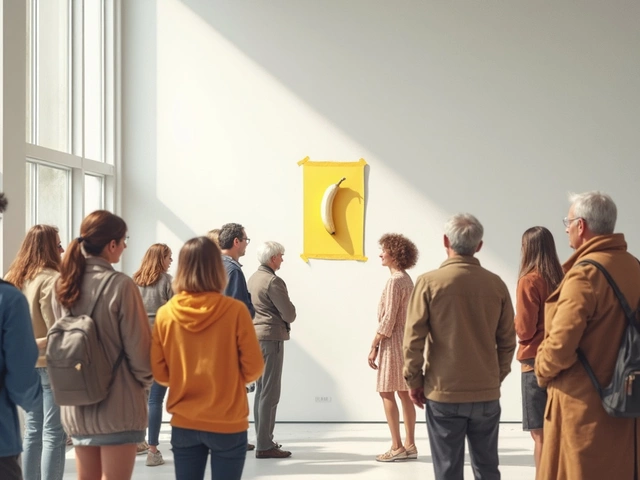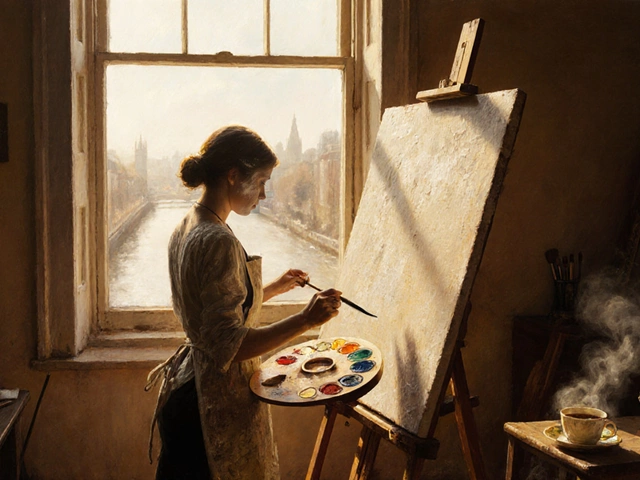First things first, digital artists' incomes can be as varied as the art they create. There's no one-size-fits-all answer here because earnings hinge on factors like the specific niche they're in, how many jobs they juggle, and how savvy they are at promoting their work. Some are raking it in with NFTs, while others stick to more traditional gigs like freelance illustration or game design. It's a mixed bag!
Take freelancers, for instance. Perks? Flexibility, of course, and often an impressive income, if you know where to look for gigs and how to price yourself right. Platforms like Upwork or Fiverr have plenty of jobs, but competition is fierce, so you've got to stand out. Ever wonder how some artists consistently find high-paying gigs? It's all about carving out a niche and building a brand around it.
Then there's the question of how digital compares to traditional art in cold hard cash. Truth is, the balance is shifting. While traditional artists might rely on gallery sales, digital artists have multiple options. From commissioned work to selling their designs online or even diving into merchandising, the landscape is diverse.
- Income Sources for Digital Artists
- Comparing Digital and Traditional Art Earnings
- Impact of Experience and Niche
- Tips for Boosting Earnings
Income Sources for Digital Artists
Let's dig into how digital artists can actually make money. Unlike the traditional scene where sales rely heavily on galleries and auctions, digital art opens up a buffet of opportunities. One major avenue is freelancing, where artists can offer their skills for custom illustrations, game assets, or even animation projects.
Freelance Platforms
Platforms like Upwork and Fiverr are hot spots for digital talents. Here, artists can showcase portfolios and bid on projects. While competition can be tough, a well-curated portfolio often makes the difference. Plus, these platforms offer the flexibility to set your own rates.
Commissioned Work
Many artists earn by taking commission requests directly. Whether it's characters, landscapes, or custom designs, fans and patrons are willing to pay for personalized art. Building a strong social media presence makes it easier to attract clients who are interested in this kind of work.
Print-on-Demand and Merchandise
Love the idea of seeing your art on t-shirts, mugs, or phone cases? Print-on-demand services like Redbubble and Society6 make it feasible. Artists upload their designs, and the service handles the production and shipping. Every sale earns a chunk of profit, and there's zero hassle with stock management.
Sales of Digital Products
Another sweet path is selling downloadable products like design templates, e-books, or stock illustrations. Websites like Etsy host these products and bring them to a global audience. It's a robust passive income stream, especially for artists who create resources other creators can use.
Non-Fungible Tokens (NFTs)
NFTs have taken the art market by storm. By tokenizing art, artists can sell unique pieces in the digital realm and even earn royalties on future sales. Although the market's ups and downs can be wild, it's a modern frontier that's reshaping digital art commerce.
Digital art is growing, just like the number of income streams available. Artists today aren't limited to local markets — they have the world at their fingertips. No wonder this field is buzzing with possibilities!
Comparing Digital and Traditional Art Earnings
When it comes to digital art versus traditional art, the income comparison is pretty interesting. Digital platforms have revolutionized the way artists make money. While traditional artists have always relied on galleries, exhibitions, or direct sales of physical pieces, the digital realm offers diverse revenue streams.
Let's start with traditional art. These artists often hope their work sells through gallery exhibitions. There's also the option of commissioned portraits or custom pieces, which can be lucrative, but they don't always come with job security. Work sold through galleries usually involves a commission cut, which means the artist might not always pocket as much as the sale price suggests.
On the flip side, digital artists are tapping into newer markets. With the rise of NFTs (Non-Fungible Tokens), digital originals can sell for astronomical amounts, especially if the artist has cultivated a strong online presence. Digital artists can also license their work, earn through ad revenue, or sell on demand through print services like Society6 or Redbubble.
Income Sources
Digital art often involves a mixture of income streams which might include:
- Freelance work through platforms like Upwork or Fiverr
- Sales of prints and merchandise via online shops
- Royalties from licensing art to companies for use in commercials or products
- Earnings from class tutorials or Patreon memberships
And let's not forget, some traditional artists are jumping on the digital bandwagon too. They scan and edit their paintings, making prints available online which can reach a wider global audience compared to their past.
| Medium | Average Income | Common Sources |
|---|---|---|
| Traditional Art | $5,000 to $10,000 per project | Gallery Sales, Commissions |
| Digital Art | $30,000 to $60,000 per year | Freelance Platforms, Online Sales, NFTs, Licensing |
What's clear is that digital mediums cater to a more tech-savvy audience, making it easier for artists to market directly to consumers without middlemen. Traditional art, while timeless, has its own hurdles like physical space and inventory management.

Impact of Experience and Niche
When it comes to getting paid as a digital artist, experience plays a huge role. Just like any job, the more seasoned you are, the better your earning potential. Experienced artists usually have a robust portfolio, which helps when trying to convince clients of your worth. Plus, they often have a network, making it easier to land those high-paying gigs.
But don't worry if you're new to the game. Everyone starts somewhere, right? Begin by building a killer portfolio that showcases your range and skill level. If you're versatile with tools like Adobe Illustrator or Corel Painter, you're off to a good start. Also, consider specializing in a specific style or niche. Whether it's character design for games or creating assets for animations, being a specialist can make you more attractive to potential clients.
Finding the Right Niche
Not every niche pays the same, though. For instance, artists who create digital concept art for the video game industry often find it more lucrative than those working in editorial illustration. The types of clients you target can really affect your payday. Understanding which niches are in demand can put you ahead of the curve.
Then there's the world of NFTs—crazy popular these days. Selling digital art as NFTs opened up new revenue streams. A lot of artists are diving into this niche and finding success, especially given the blockchain's transparency. Artists like Beeple have made millions, although those cases are rare. Generally, it's a lucrative opportunity worth exploring.
| Niche | Average Earnings (per project) |
|---|---|
| Video Game Concept Art | $500 - $1,500 |
| Freelance Illustrations | $100 - $700 |
| NFT Sales | Highly Variable |
In sum, choosing your niche wisely and gaining experience are key to maximizing your earnings. Keep honing your craft, stay updated with current trends, and always be open to pivoting to higher-demand markets. The digital art world is constantly evolving, with plenty of opportunities to capitalize on.
Tips for Boosting Earnings
Want to know how digital artists can make the most of their creative talents? Here are some strategies that can help you rake in more cash and ensure your skills get the attention they deserve.
Build an Online Presence
This is non-negotiable. Use platforms like Instagram, ArtStation, or Behance to showcase your work to a broader audience. Not only does this boost your visibility, but it can also lead to new job opportunities. Regularly update your portfolio with your best pieces and engage with followers to keep them coming back for more.
Leverage Multiple Income Streams
Relying on just one source of income can be risky. Many freelance artists diversify their earnings by:
- Offering courses or tutorials online. Sites like Skillshare and Udemy are perfect places to share your expertise.
- Creating and selling NFTs, especially for those into unique digital pieces.
- Selling prints or merchandise directly to fans. Platforms like Etsy or Redbubble let you turn your art into sellable goods.
Stay Updated on Market Trends
The digital art world is constantly evolving. Keep an eye on emerging trends and adapt. Whether it's new software tools or popular styles, being in the know means you'll be better positioned to meet market demands.
| Platform | Average Earnings |
|---|---|
| Freelance Websites | $20-$80 per hour |
| NFT Sales | Varies greatly, some reaching millions |
Network and Collaborate
Your network can be a powerful tool. Attend online art events or workshops, and don’t shy away from collaborating with other artists. Not only can this offer fresh perspectives, but it also doubles your exposure.
For those in the creative industry, diversity and adaptation are the secrets to financial stability and growth. So take these tips to heart and see how they can transform your earning potential!





